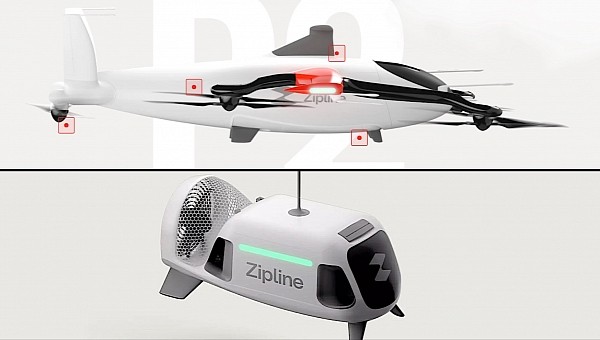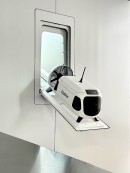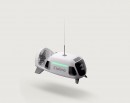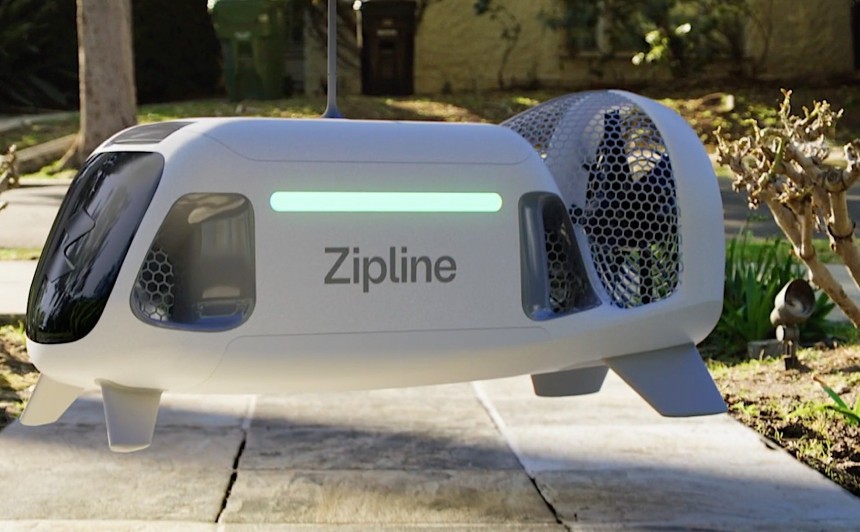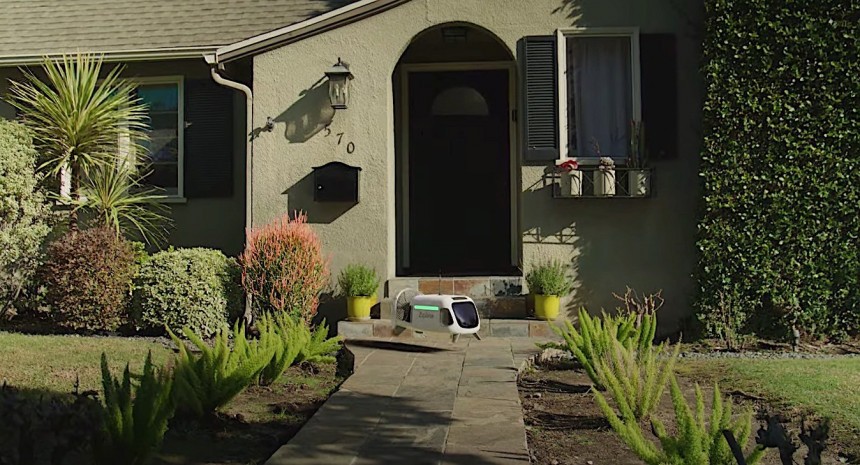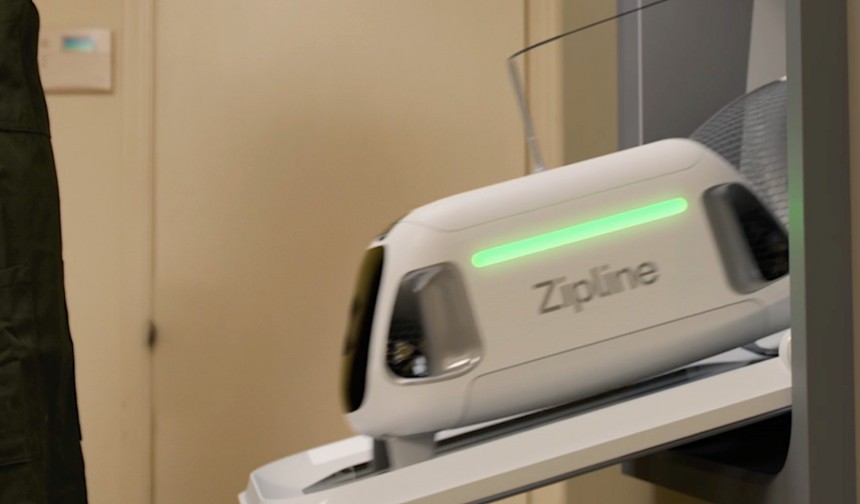It is extremely difficult to have a clear picture of this, due to the many companies in the business of delivering goods to the homes of their customers, but the general consensus is that the vast majority of packages being shipped are extremely light, weighing anywhere between one and five pounds (0,4 - 2.2 kg).
That’s because people order food, medicine, and other small items much more frequently than they do large packages containing stuff like TVs or washing machines. And they do it so often that probably hundreds of thousands of delivery trips take place globally every day.
The vast majority of these trips are made by delivery guys and gals using internal combustion engine machines, be them two-wheelers of all shapes and sizes or full-blown cars. And that brings about a lot of issues, from increased congestion in certain periods of the day to increased pollution.
Because of their versatile nature, drones could solve a lot of those problems. Already in use for delivery purposes in various parts of the world, they’re not yet the main tools used for the transport of goods, but they’ll certainly become so in the coming years.
A large number of startups have joined the race to make drones capable delivery platforms. And one of them is a crew called Zipline. Established in 2014 in California, it already is an active presence in select places in the U.S., but also in countries like Rwanda, Ghana, and Japan.
Until this week, Zipline had just a single product in its portfolio to offer delivery operators, the so-called Platform 1 (P1). We’re talking about a fixed-wing, twin-propeller, fully-electric machine capable of carrying up to 4 pounds (1.8 kg) of cargo to distances as far as 60 miles (100 km).
Autonomous by nature, the P1 has already clocked 40 million miles (64.3 million km) across the fleet, flown during over half a million delivery trips. It will continue to add more to these numbers. But starting later this year it will be accompanied by the Platform 2 (P2) drone.
The product was shown for the first time this week by the American company. It too is an electric and autonomous flyer, only this one is actually a combo of two machines meant to make pickup and delivery of the stuff you need faster and easier.
The drone itself, which its maker officially calls a Zip, is a much more complex machine than its predecessor, featuring a total of five propellers that allow it to both hover and gain forward motion. They spin courtesy of motors and batteries that have not been fully detailed.
We do know what the P2 Zip is capable of, though. With a maximum action radius of just 10 miles (16 km), thus less capable than the P1, the drone can charge its batteries in specially created docks. That means it can alternatively fly from dock to dock, and in a straight line that would translate into a maximum range of 24 miles (39 km).
The P2 can move more cargo than its predecessor though, to a total of up to eight pounds (3.6 kg). Given how its top speed is estimated at 70 mph (112 kph), it can have the product you want on your doorstep “7 times as fast as traditional automobile delivery,” as per Zipline’s own estimates.
As for the droid, that’s a cutesy box of sorts designed to pick up and deliver the actual goods. That’s because, you see, Zipline’s approach is a tad different than what we’re used to when it comes to drone delivery. Let’s have a quick look at how this entire thing is supposed to work.
So, you order your favorite meal. In a restaurant some streets away, the chef does his thing, and when the meal is ready someone packages it for transport. On one of the restaurant’s walls, next to a chute of sorts, one of the Zipline droids waits patiently for the food to be loaded into it.
Once that is done the droid moves up the chute and exits the building, ready to mate with the Zip drone that’s waiting patiently outside, attached on the other side of the wall. Once the pairing is complete, the Zip starts its journey to your home.
At the destination, the drone enters a hover mode (it can do that at altitudes of up to 300 feet/91 metes). The droid is then lowered on a tether, and voila, dinner is served.
It’s an innovative process, if you come to think of it, one that eliminates in a single move the need for packages to be dropped from uncomfortable heights, but also some people’s urge to reach out and snatch the package right from the drone’s claws.
Zipline says it will begin testing the Zip-droid combo as part of high-volume flight tests later this year - 100 drones are scheduled to take to the skies for a combined 10,000 flights. Shortly after these have been completed, we should see the first P2 perform its duties in the hands of the first customer.
Several companies have expressed interest in the technology, including salad restaurant Sweetgreen, but also medical institutions like Michigan Medicine, Intermountain Health, or MultiCare Health System.
Zipline does not say how much one of its drones costs, but they are of paramount importance for the company, as it plans to “operate more flights annually than most airlines.”
The vast majority of these trips are made by delivery guys and gals using internal combustion engine machines, be them two-wheelers of all shapes and sizes or full-blown cars. And that brings about a lot of issues, from increased congestion in certain periods of the day to increased pollution.
Because of their versatile nature, drones could solve a lot of those problems. Already in use for delivery purposes in various parts of the world, they’re not yet the main tools used for the transport of goods, but they’ll certainly become so in the coming years.
A large number of startups have joined the race to make drones capable delivery platforms. And one of them is a crew called Zipline. Established in 2014 in California, it already is an active presence in select places in the U.S., but also in countries like Rwanda, Ghana, and Japan.
Autonomous by nature, the P1 has already clocked 40 million miles (64.3 million km) across the fleet, flown during over half a million delivery trips. It will continue to add more to these numbers. But starting later this year it will be accompanied by the Platform 2 (P2) drone.
The product was shown for the first time this week by the American company. It too is an electric and autonomous flyer, only this one is actually a combo of two machines meant to make pickup and delivery of the stuff you need faster and easier.
The drone itself, which its maker officially calls a Zip, is a much more complex machine than its predecessor, featuring a total of five propellers that allow it to both hover and gain forward motion. They spin courtesy of motors and batteries that have not been fully detailed.
The P2 can move more cargo than its predecessor though, to a total of up to eight pounds (3.6 kg). Given how its top speed is estimated at 70 mph (112 kph), it can have the product you want on your doorstep “7 times as fast as traditional automobile delivery,” as per Zipline’s own estimates.
As for the droid, that’s a cutesy box of sorts designed to pick up and deliver the actual goods. That’s because, you see, Zipline’s approach is a tad different than what we’re used to when it comes to drone delivery. Let’s have a quick look at how this entire thing is supposed to work.
So, you order your favorite meal. In a restaurant some streets away, the chef does his thing, and when the meal is ready someone packages it for transport. On one of the restaurant’s walls, next to a chute of sorts, one of the Zipline droids waits patiently for the food to be loaded into it.
At the destination, the drone enters a hover mode (it can do that at altitudes of up to 300 feet/91 metes). The droid is then lowered on a tether, and voila, dinner is served.
It’s an innovative process, if you come to think of it, one that eliminates in a single move the need for packages to be dropped from uncomfortable heights, but also some people’s urge to reach out and snatch the package right from the drone’s claws.
Zipline says it will begin testing the Zip-droid combo as part of high-volume flight tests later this year - 100 drones are scheduled to take to the skies for a combined 10,000 flights. Shortly after these have been completed, we should see the first P2 perform its duties in the hands of the first customer.
Several companies have expressed interest in the technology, including salad restaurant Sweetgreen, but also medical institutions like Michigan Medicine, Intermountain Health, or MultiCare Health System.
Zipline does not say how much one of its drones costs, but they are of paramount importance for the company, as it plans to “operate more flights annually than most airlines.”
